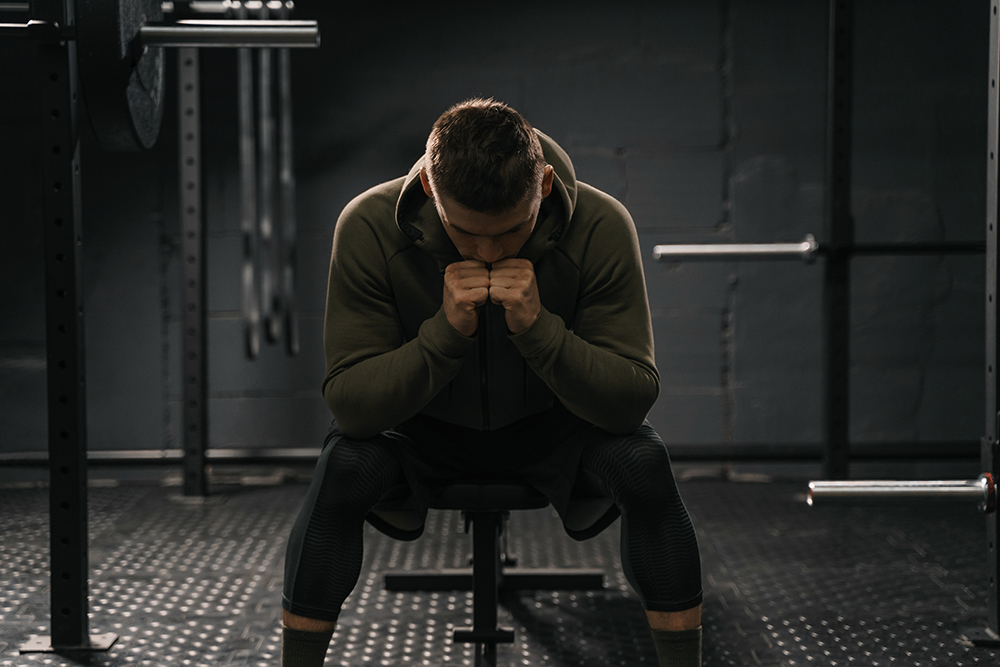La reprise du sport après une blessure : l'apport de la psychologie
Mots-clés :
anxiété, blessure, psychométrie, réathlétisation, retour à la compétitionRésumé
Elle est redoutée par tous les athlètes et par tous les entraîneurs, elle peut anéantir des années de travail en un claquement de doigts ou de genou : la blessure. Un arrêt de la pratique souvent difficile à surmonter, et une reprise à réaliser avec précaution, en tenant compte de facteurs aussi bien physiques que psychologiques.
Références
Ajzen, I. (1991) The theory of planned behavior. Organizational Behavior and Human Decision Processes, 50(2), p. 179-211. https://doi.org/10.1016/0749-5978(91)90020-t.
Andersen MB et Williams JM, « A model of stress and athletic injury: Prediction and prevention », Journal of Sport and Exercise Psychology, 1988, 10(3), p. 294-306. https://doi.org/10.1123/jsep.10.3.294.
Bahr R, Clarsen B, Derman W et al., « International Olympic Committee consensus statement: methods for recording and reporting of epidemiological data on injury and illness in sport 2020 (including STROBE Extension for Sport Injury and Illness Surveillance [STROBE-SIIS]) », British Journal of Sports Medicine, 2020, 54, p. 372-389. https://doi.org/10.1136/bjsports-2019-101969.
Brackett MA, Mayer JD et Warner RM, « Emotional intelligence and its relation to everyday behaviour », Personality and Individual Differences, 2004, 36(6), p. 1387-1402. https://doi.org/10.1016/S0191-8869(03)00236-8.
Brown C, « Injuries: The psychology of recovery and rehab », S. Murphy (éd.), The Sport Psych Handbook, Champaign, IL: Human Kinetics, 2005, p. 215-35.
Cheng WNK, Hardy L et Markland D, « Toward a three-dimensional conceptualization of performance anxiety: Rationale and initial measurement development », Psychology of Sport and Exercise, 2009, 10(2), p. 271-278. https://doi.org/10.1016/j.psychsport.2008.08.001.
Flint A, « Integrating sport psychology and sports medicine in research: The dilemmas Article », Journal of Applied Sport Psychology, 1998, 10(1), p. 83-102. https://doi.org/10.1080/10413209808406379.
Gross JJ et Thompson RA, « Emotion regulation: Conceptual foundations », Handbook of Emotion Regulation, Guilford Press, New York, 2007, p. 3-24.
Kennedy-Moore E et Watson JC, Expression Emotion, Guildford Press, New York, 1999.
Lazarus R et Folkman S, Stress, Appraisal and Coping, Springer, New York, 1984.
Lethem J, Slade PD, Troup JDG etBentley G, « Outline of a fear-avoidance model of exaggerated pain perception », Behaviour Research and Therapy, 1983, 21(4), p. 401-408. https://doi.org/10.1016/0005-7967(83)90009-8.
Melzack R et Dennis SG, « Neurophysiological foundations of pain », The Psychology of Pain, Sternbach RA, Raven Press, New York, 1978, p. 1-26.
Mikolajczak M, Menil C et Luminet O, « Explaining the protective effect of trait emotional intelligence regarding occupational stress: Exploration of emotional labor processes », Journal of Research in Personality, 2007, 41(5), p. 1107-1117. https://doi.org/10.1016/j.jrp.2007.01.003.
Mikolajczak M, Quoidbach J, Kotsou I et Nélis D, Les compétences émotionnelles, Dunod, Paris, 2009.
Podlog L et Eklund RC, « Return to sport after serious injury: A retrospective examination of motivation and psychological outcomes », Journal of Sport Rehabilitation, 2005, 14(1), p. 20-34. https://doi.org/10.1123/jsr.14.1.20.
Podlog L, Dimmock J et Miller J, « A review of return to sport concerns following injury rehabilitation: Practitioner strategies for enhancing recovery outcomes », Physical Therapy in Sport, 2011, 12(1), p. 36-42. https://doi.org/10.1016/j.ptsp.2010.07.005.
Spielberger CD, « Current trends in theory and research on anxiety », Anxiety: Current Trends in Theory and Research, Academic Press, New York, 1972, p. 3-19.
Sumilo D et Stewart-Brown S, « The causes and consequences of injury in students at UK institutes of higher education », Public Health, 2006, 120(2), p. 125-131. https://doi.org/10.1016/j.puhe.2005.01.018.
Taylor J et Taylor S, Psychological approaches to sport injury rehabilitation, MD, US : Aspen Publishers, 1997.
Thorndike EL, « Intelligence and its uses », Harper’s Magazine, 1920, 140, p. 227-235.
Trinidad DR et Johnson CA, « The association between emotional intelligence and early adolescent tobacco and alcohol use », Personality and Individual Differences, 2002, 32, p. 95-105. https://doi.org/10.1016/S0191-8869(01)00008-3.
Wadey R et Evans L, « Working with injured athletes: research and practice », S.Hanton et S.D.Mellalieu (éds), Professional Practice in Sport Psychology: A Review, Routledge, Londres, 2011.
Wadey R, Podlog L, Hall M, HamsonUtley J, Hicks-Little C et Hammer C, « Reinjury Anxiety, Coping, and Returnto-Sport Outcomes: A Multiple Mediation Analysis », Rehabilitation Psychology, 2014, 59(3), p. 256-266. https://doi.org/10.1037/a0037032.
Walker N, Thatcher J et Lavallee D, « A preliminary development of the re-injury anxiety inventory (RIAI) », Physical Therapy in Sport, 2010, 11(1), p. 23-29. https://doi.org/10.1016/j.ptsp.2009.09.003.
Walker N et Thatcher J, « The emotional response to athletic injury: re-injury anxiery », Coping and Emotion in sport, Second Edition, J. Thatcher, M. Jones et D. Lavallee (éds), Routledge, New York, 2011, p. 236-260.
Weinberg RS et Gould D, Psychologie du sport et de l’activité physique, Éditions Vigot, Paris, 1997.
Wiese-B jornstal DM, Smith AM, Shaffer SM et Morrey MA, « An integrated model of response to sport injury: Psychological and sociological dynamics », Journal of Applied Sport Psychology, 1998, 10(1), p. 46-69. https://doi.org/10.1080/10413209808406377.
Wiese-Bjornstal DM, White AC, Wood KN et Russell HC, « Sport medecine psychology », T.S. Horn et A.L. Smith (éds), Advances in sport and exercice psychology (4e éd.), Champaign, IL : Human Kinetics, 2019, p. 287-408.

Téléchargements
Publiée
Licence
(c) Copyright Coline Régnauld, Alexis Ruffault (Auteur) 2024

Ce travail est disponible sous licence Creative Commons Attribution - Pas d'Utilisation Commerciale - Pas de Modification 4.0 International.

